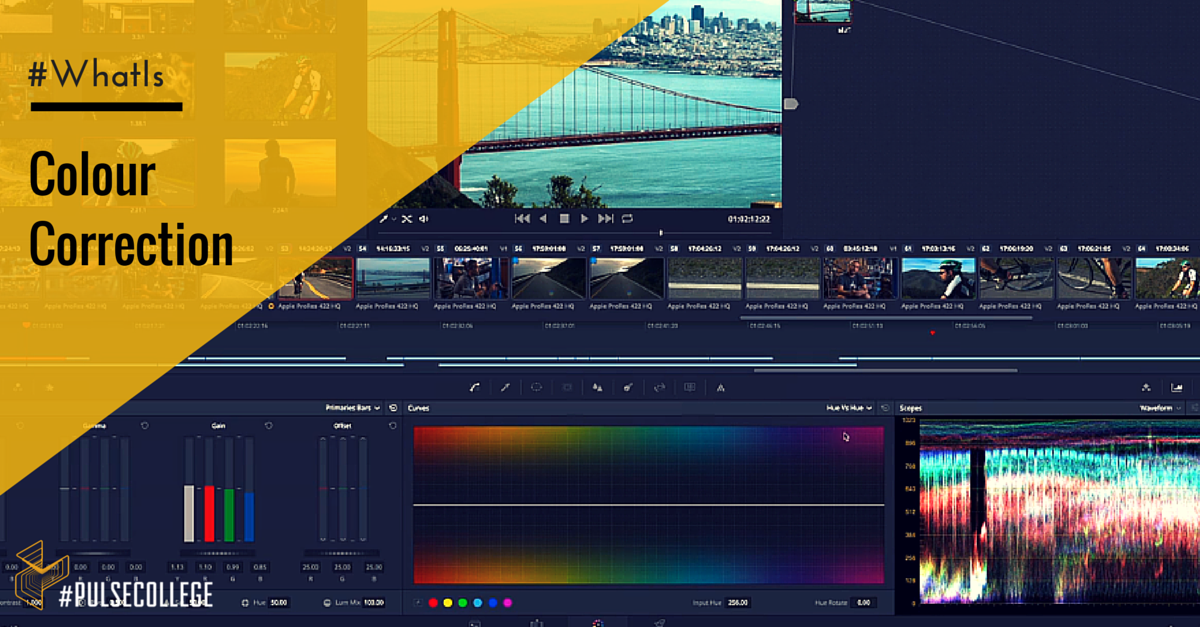#WHATis Blog Series: Colour Correction
Colour tells its own story and the visual and emotional impact conveyed by colour plays a significant role in how we respond to what we see. That’s what makes it a vital part of the post production work on a film and for those attending film school, learning about the tools and techniques used to “correct” colour is extremely valuable and gives students the opportunity to consider specialising in this field.
Although the terms ‘colour correction’ and ‘colour grading’ are often used inter-changeably and there is some grey area in the definitions for both, in reality they are two different processes, although the same tools can be used to work on both correction and grading. Colour correction relates to standardising colours so that they are consistent throughout the footage, in line with what the human eye would expect. It is designed to improve the quality of the film. Colour grading involved editing an image for artistic affect, so that the look and feel of the image reflects the mood and message that the shot is trying to convey. Both correction and grading play a key role in film production.
Film School and the Colour Correction Kit
Only a few short years ago, the technology needed for colour correction and grading on film footage was prohibitively expensive and the work was done in bespoke edit suites. Now anyone with a mac or PC can easily access the latest tools, however many people working heavily in this field will work on a hardware device (surface) especially designed for this process as it’s more functional, quicker and easier to use for the colourist.
It’s impossible to talk about colour correction without considering the applications available. There’s a huge array of software options – some free, some relatively expensive – however there are a small number of tools that are becoming very popular and for anyone considering working in this field, it makes sense to become familiar with the most common options. If you attend film school at Pulse College, you’ll have the chance to learn about a number of these tools. For beginners interested in film production and colour correction, our Adobe After Effects course is a great place to start. For those more committed to working specifically with colour, DaVinci Resolve is the best option at the outset. There are colour correction tools in a number of other applications also.
Colour Correction Applications
DaVinci Resolve is the definitive application for colour correction and if you see yourself working on Hollywood films, this is the application you’ll want to get to grips with. Our 2 day workshop introduces students to the theory and practice of colour correction using this gold-standard toolkit.
Final Cut Pro X is an advanced platform, used globally by professional film and video producers. It is a comprehensive package offering in-depth functionality in terms of editing material and the colour correction tools are just a small part of this toolset. Our 5 day course will give you an overview of the basic techniques and some of the advanced features available on Final Cut Pro X.
Adobe Premier Pro is a video editing tool with excellent colour correction functionality and our official Adobe 3 day course offers students a comprehensive overview of the platform.
Adobe After Effects is a good tool for students starting out in their film production studies and our 3 day official Adobe course includes an introduction to the basics of colour correction.
Pulse College – the ultimate Film School
Pulse College gives students the opportunity to work with industry professionals who have in-depth technical expertise and excellent contacts in the business. If you’re ready to explore the dynamic, exciting world of colour, then touch base with us, check out our open days and get ready to tap into your creative genius! Who wouldn’t want to do that?
[openday]
Follow Us

